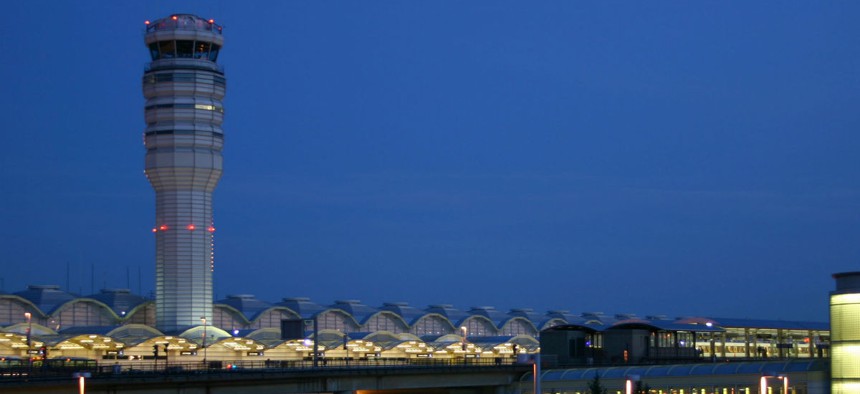
Douglas Litchfield / Shutterstock.com
Republicans Introduce Plan to ‘Remove 30K People From the Federal Government’s Payroll’
Controversial privatization proposal receives some union backing.
Republicans in Congress have introduced a plan to de-federalize air traffic control, which would move 30,000 federal employees into a non-profit corporation.
Proponents of the U.S. aviation overhaul say it would bring stability to a system that has been devastated by a partisan and volatile Congress. While the privatization of the Federal Aviation Administration has long been touted and debated, the renewed effort gained momentum after the union representing air traffic controllers signed on to the plan.
Rep. Bill Shuster, R-Pa., chairman House Transportation and Infrastructure Committee, introduced the Aviation Innovation, Reform and Reauthorization (AIRR) Act on Wednesday, as part of the regular process of re-upping the agency’s power. The legislation would keep the FAA intact, but it would tasked solely with a safety regulatory mission. All air traffic responsibilities and employees would be moved to the corporation governed by a board of directors that would represent aviation system users.
Shuster promoted his bill for removing “30,000 people from the federal government’s payroll,” while arguing a more regular funding stream would allow for faster modernization and keep American aviation more competitive. The non-profit corporation would not make any budget requests and would receive no taxpayer dollars. It would instead operate on a “self-sustaining, cost-based user fee structure.”
That structure would break air traffic control “free from the bureaucratic inertia and funding uncertainty that have plagued the FAA for decades,” the congressman wrote in a description of the bill.
The National Air Traffic Controllers Association threw its support behind the bill, saying it was “in alignment with all of our organization’s policies, practices and principles.” NATCA has voiced its displeasure with the ebbs and flows of short-term funding bills, threatened and actual government shutdowns, threatened FAA-specific shutdowns and sequestration.
“The status quo of unstable, unpredictable funding for the National Airspace System has led to serious problems at the FAA,” NATCA President Paul Rinaldi said last year. “It cannot finance long-term projects, develop the system for new users or modernize our country’s aging infrastructure. The FAA has also struggled to maintain proper resources and staff at our busiest air traffic control facilities.”
Shuster echoed that sentiment in his outline of the proposed overhaul.
“Today’s budget uncertainty has contributed to significant cost increases and delayed delivery of ATC modernization programs,” he wrote. “Sequestration, employee furloughs, and government shutdowns have also had a devastating impact.”
Not all labor threw its support behind the reform measure. The American Federation of Government Employees; the American Federation of State, County and Municipal Employees; and the Professional Aviation Safety Specialists all rejected the proposal, deriding what they referred to as a privatization effort.
“FAA employees are public servants who ensure the safety of the flying public,” the groups wrote in a collective statement. “A privatized model that functions without oversight could lead to self-serving agendas, taking control out of the public’s hands.”
The unions also called for a more stable funding stream, but said upending the entire system was unnecessary. Rep. Peter DeFazio, D-Ore., struck a similar tone, saying a non-profit corporation conducting air traffic responsibilities would not always have the best interest of the public in mind.
“The privatization plan will tear apart aviation programs, risk unnecessary duplication and complexity, and ultimately cost money for taxpayers and travelers,” DeFazio said. “It jeopardizes stable, predictable funding and risks new fees or taxes.”
NATCA and Shuster have avoided the term “privatization,” but the latter made clear this was not simply a government entity by another name.
“This is not a new form of federal bureaucracy or a government-sponsored enterprise,” Shuster said.
The chairman said his bill would reduce the red tape involved in approving new technologies that he argued “stifle innovation” and “undermine competitiveness.” His changes would help bring new products into the market more quickly, he said. The bill would also provide boosted training and development for the remaining FAA employees -- about 15,000 individuals -- and create new national standards and metrics to avoid regional discrepancies.
FAA is currently operating on a six-month stopgap authorization bill, set to expire in March. Congress last authorized the agency in 2012 after it had survived on 22 short-term extensions.
(Image via Douglas Litchfield / Shutterstock.com)







